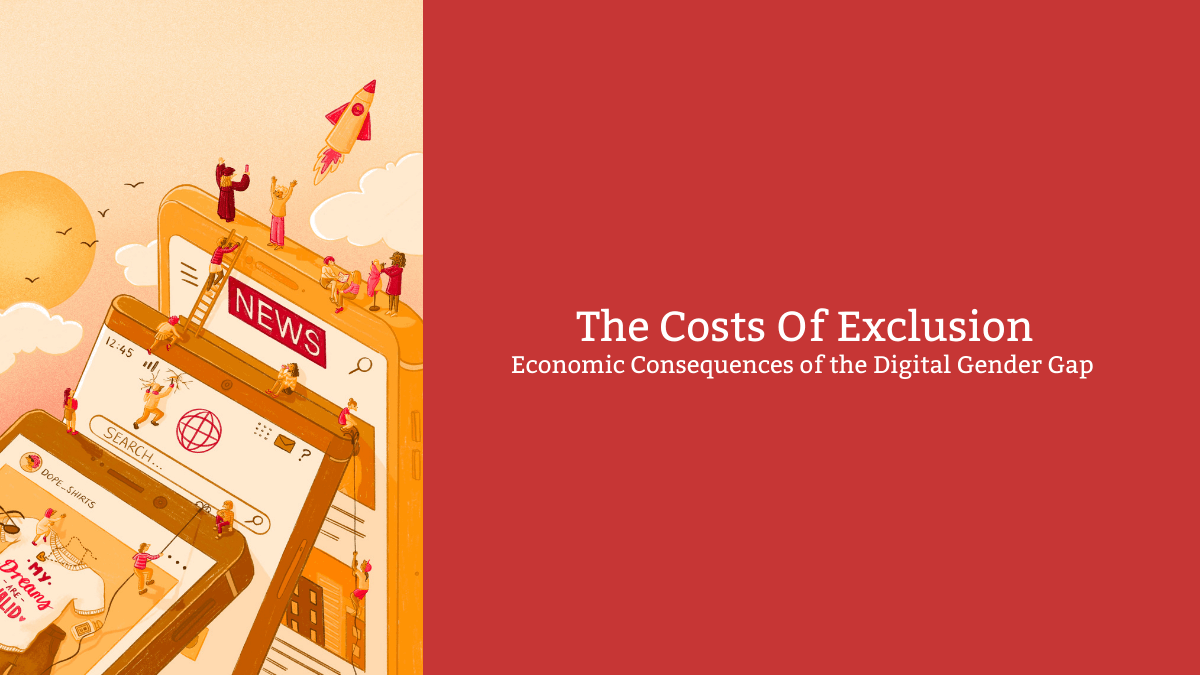
Costs of Exclusion Report
October 10, 2021
The Costs of Exclusion: Governments are missing out on hundreds of billions of dollars because of the digital gender gap
Across the world, millions of people are still unable to access the internet and participate online — and women are disproportionately excluded. Men are 21% more likely to be online than women globally, rising to 52% in Least Developed Countries.
Various barriers prevent women and girls from accessing the internet and participating online, including unaffordable devices and data tariffs, inequalities in education and digital skills, social norms that discourage women and girls from being online, and fears around privacy, safety, and security.
Women already achieve incredible things in the digital economy. However, their experiences as content creators and entrepreneurs are more an exception than part of everyday life.
While digital exclusion limits the opportunities for women and girls unable to connect, it also has broader societal and economic impacts that affect everyone.
This report estimates the economic impact of women’s digital exclusion and underlines the economic opportunity governments have to include women in a fully inclusive digital economy.
Key Findings
- There is a substantial digital gender gap — and it’s not getting better. In the 32 countries we studied, just over a third of women were connected to the internet compared to almost half of men.
- Countries have missed out on $1 trillion USD in GDP as a result of women’s exclusion in the digital world. In 2020, the loss to GDP was $126 billion USD.
- This economic hit means billions in lost taxes that could be invested to improve education, health, and housing. This lost productivity translates to a missing $24 billion in tax revenues annually for these governments, based on current tax-to-GDP ratios.
- Governments are not adopting the policies they need to bridge the digital gender gap. Of all the policy areas covered by the Alliance for Affordable Internet (A4AI) in its annual Affordability Drivers Index, gender consistently receives the lowest scores.
- Policymakers have a $500 billion+ economic opportunity. Closing the digital gender gap in these countries would deliver an estimated $524 billion increase in economic activity by 2025.
Bridge the digital gender gap and grow digital economies
As economies have contracted in the face of the Covid-19 pandemic, governments are looking to the digital world as a new, robust source of economic productivity and growth. This growth must be inclusive and must invest in programmes, policies, and infrastructure that enable more women to use the internet.
A digital economy without the full participation of women cannot reach its full potential. Digital inclusion is not only good policy — it’s good economics.
To see the full findings and detailed policy recommendations, read the global report.
Report illustrations by Anja du Plessis.
The Executive Summary is also available in: